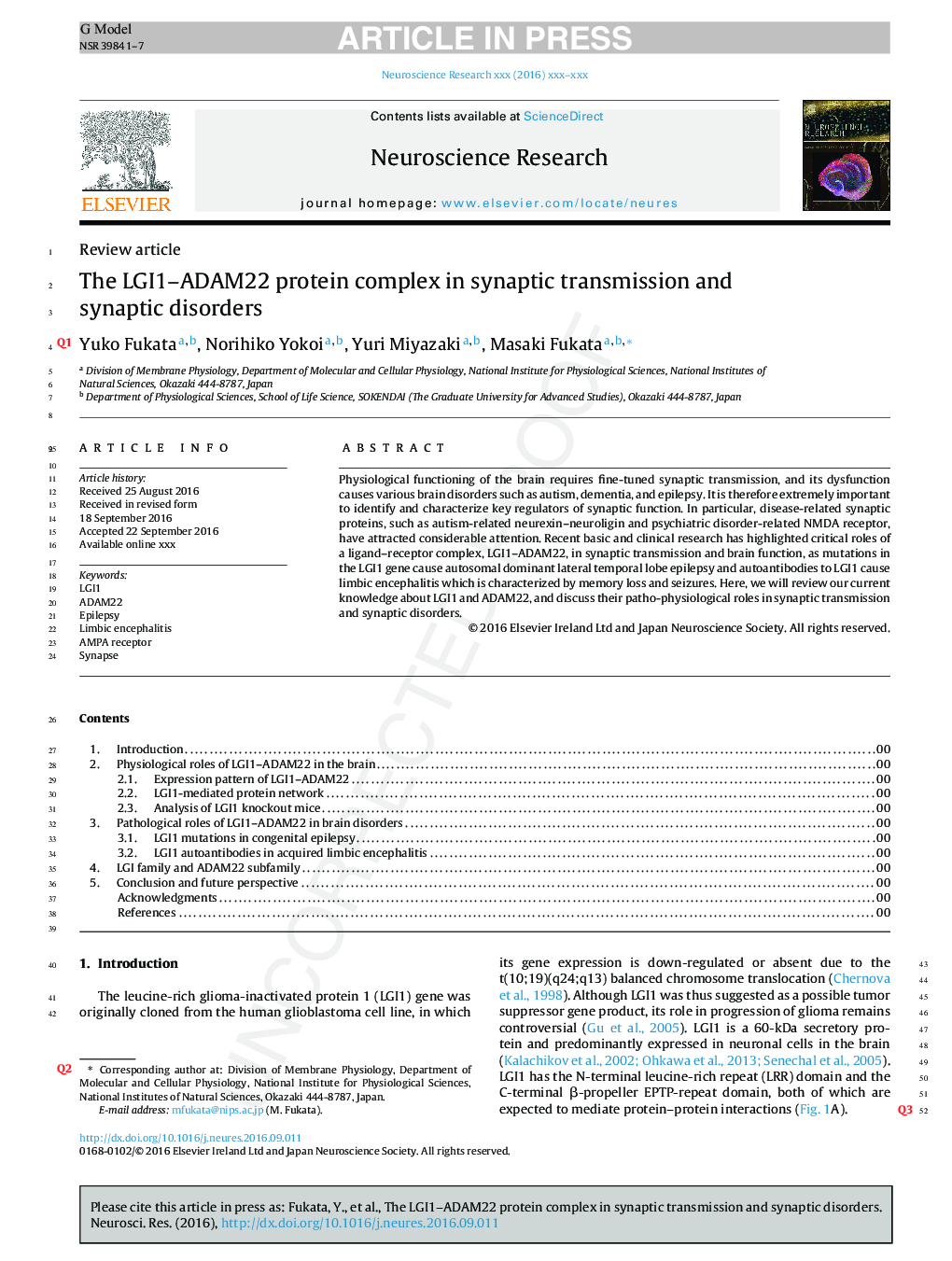| Article ID | Journal | Published Year | Pages | File Type |
|---|---|---|---|---|
| 5738999 | Neuroscience Research | 2017 | 7 Pages |
Abstract
Physiological functioning of the brain requires fine-tuned synaptic transmission, and its dysfunction causes various brain disorders such as autism, dementia, and epilepsy. It is therefore extremely important to identify and characterize key regulators of synaptic function. In particular, disease-related synaptic proteins, such as autism-related neurexin-neuroligin and psychiatric disorder-related NMDA receptor, have attracted considerable attention. Recent basic and clinical research has highlighted critical roles of a ligand-receptor complex, LGI1-ADAM22, in synaptic transmission and brain function, as mutations in the LGI1 gene cause autosomal dominant lateral temporal lobe epilepsy and autoantibodies to LGI1 cause limbic encephalitis which is characterized by memory loss and seizures. Here, we will review our current knowledge about LGI1 and ADAM22, and discuss their patho-physiological roles in synaptic transmission and synaptic disorders.
Related Topics
Life Sciences
Neuroscience
Neuroscience (General)
Authors
Yuko Fukata, Norihiko Yokoi, Yuri Miyazaki, Masaki Fukata,
